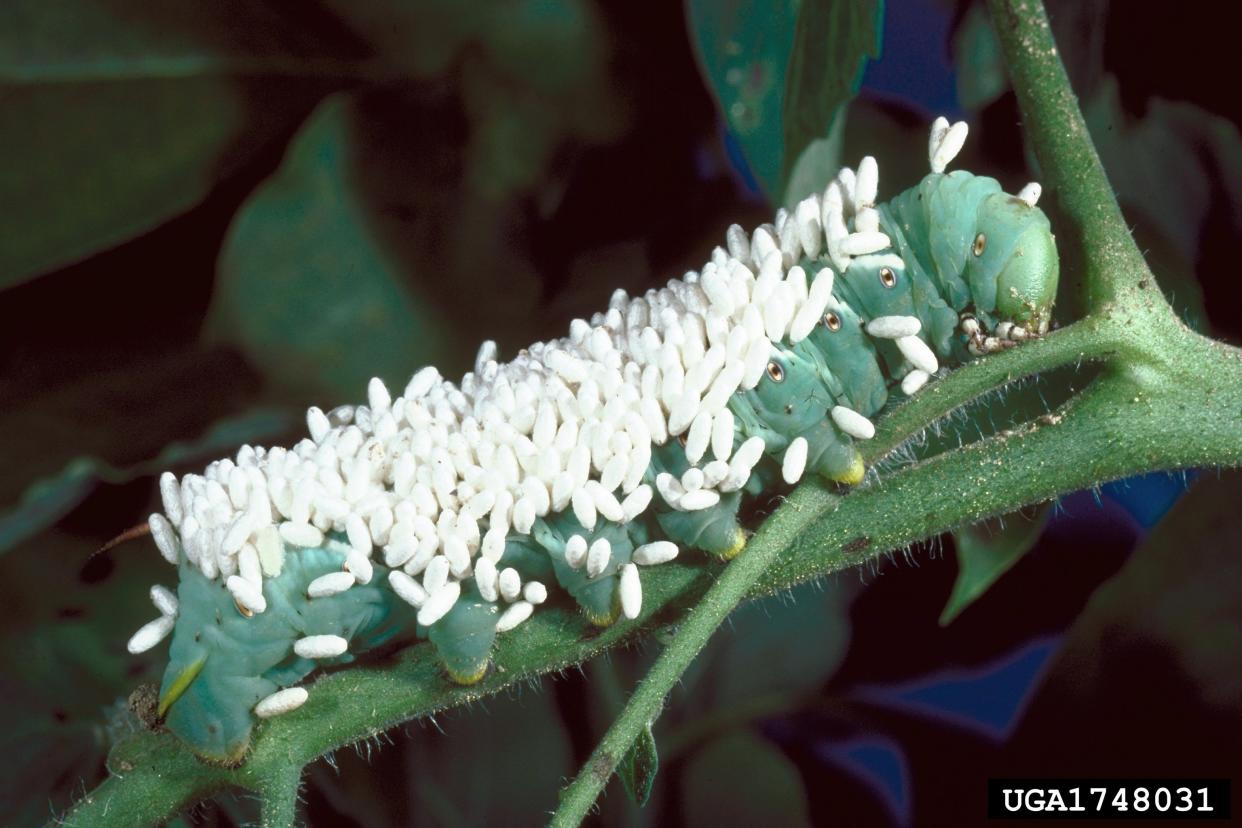Garden Q&A: Plants use sound, sight, smell to their advantage

As gardeners, we use our eyes and ears, nose and touch a lot. I love to hear the birds and see the butterflies and bees visiting the plants. But I am also excited to know about all the wonderful things that go on that I am totally unaware of.
While we humans have decent hearing and eyesight, most of the insects out there see in ways we cannot really imagine. They can’t see far (sometimes only a few yards), but they can see ultraviolet markings on the light spectrum that we cannot see at all.
Flowers use ultraviolet markings to show insects the way into the flower to find the nectar they are seeking. They make the nectar as a lure for the pollinator. The hairy honeybee or bumblebee (or other pollinator) snuggles into the flower so that it can sip up the nectar. In the process, it cannot avoid brushing up against the pollen-bearing anthers of the flowers. As it brushes against them, the pollen sticks to the hairs of the bee’s body. The bee then flies off to the next flower, looking for the ultraviolet markings to see the easiest way in. As it brushes its way in, it will drop off some of pollen it has just picked up and pollination can begin — the beginning of seeds for the next season. Here are some native flowers glowing in UV light: wildflower.org/magazine/native-plants/a-different-light
Dogs have fantastic noses, capable of scenting 40 times better than we can. Insects and plants also use fragrance (called a volatile organic compound or VOC) in their lives, and we are just beginning to understand how they use it. The whole idea might seem strange because insects don’t have noses. And making the VOCs is complex for a plant that is stuck in place with limited resources.
Humans appreciate that plants sometimes use fragrance to attract pollinators to pollinate them. We love the fragrance. Amazingly, they also use it to warn other plants nearby that they are under attack. When an insect such as a caterpillar is eating plant A, the plant can emit an "under-attack" odor. In response to that VOC, nearby plants can change their sap chemistry, altering it to make it less appealing. After tasting, the predator may then decide to move on.
Some plants, such as corn or tomatoes, may emit a VOC that summons the predator of the caterpillar. The parasitic wasp that is summoned to tomatoes then lays its eggs on the caterpillar and the larvae grow up using the caterpillar as food. We used to think the wasp randomly found the caterpillar. But for the plant to summon the wasp to slowly kill the caterpillar has the makings of a science fiction movie.
The sap in plants contains the sugars that the plant makes from the sun’s energy, but it also contains hormones and minerals and other elements absorbed from the ground or created within the plant. These plants may be very attractive to insects, but now we know plants can also make themselves very unattractive or attract predators with their VOCs. And strangely, they make changes to make that happen. Amazing!
The ability of plants to emit VOCs is not all good for gardeners. If stressed plants are out there quietly screaming, “I’m stressing out” with VOCs, unfortunately there are plenty of pests taking the information in and ready to pounce. They smell the VOCs and swoop in. A stressed plant is less able to withstand an attack by pests. Try to protect your plants from heat and drought stress by careful watering and fertilizing. Recognize the stress of transplanting and “baby’ your plants afterward to ensure their safe landing.
If you are one of those gardeners who talks to your plants or sings in the garden, good job! Research in the last 10 years has shown that sound waves can stimulate photosynthesis, root growth, seed gemination, immunity against pathogens and tolerance to drought. Some plants may also be sending out tiny noises, ultrasonic popping sounds. Where will this go? In China, farmers already play music on farms. It’s called “green music.” To see some of the research on sound and plants, see here: ncbi.nlm.nih.gov/pmc/articles/PMC5797535/
Some of you may be wondering how this is possible for plants to sense sound without ears or mouths. We don’t know. But insects, snakes, frogs and birds respond to sound without eardrums. And sounds can be generated in all kinds of ways, undoubtedly more ways than we know.
We humans have to be very careful not to limit our thinking to the narrow view that animals must do things the way we do them. As we learn these things, scientists may be able to use the signals to figure out how to grow better food, or flowers with fewer pests. Can this information help us know when plant needs are best being met? Increase nutrition? Or, how to prevent crop losses, or reduce insect invasions? Plants feed us and provide shelter and fibers. For thousands of years, we have been figuring them out. We are still working on it. Stay well, gardeners.
Becky Wern is a Master Gardener volunteer with the Duval County Extension Service and the University of Florida/IFAS. For gardening questions, call the Duval County Extension Office at (904) 255-7450 from 9 a.m. to noon and 12:30 to 3:30 p.m. Monday-Friday and ask for a Master Gardener volunteer.
This article originally appeared on Florida Times-Union: Garden Q&A: Sound, sight, smell play important roles

